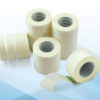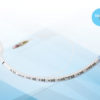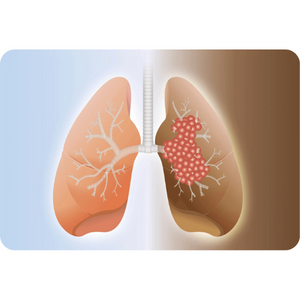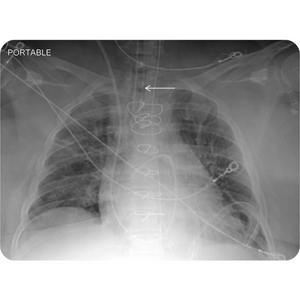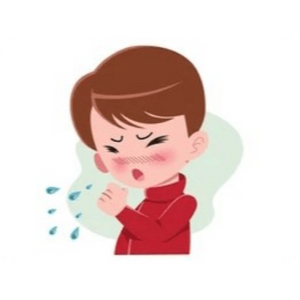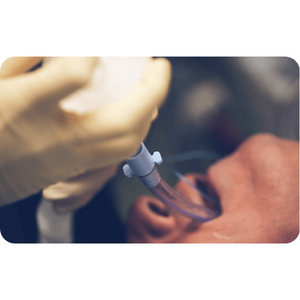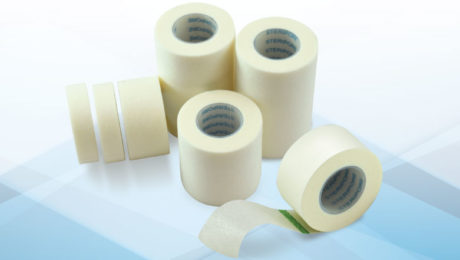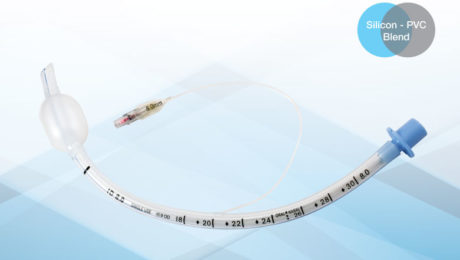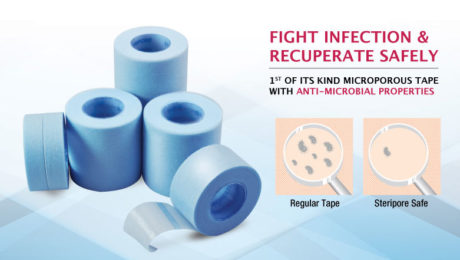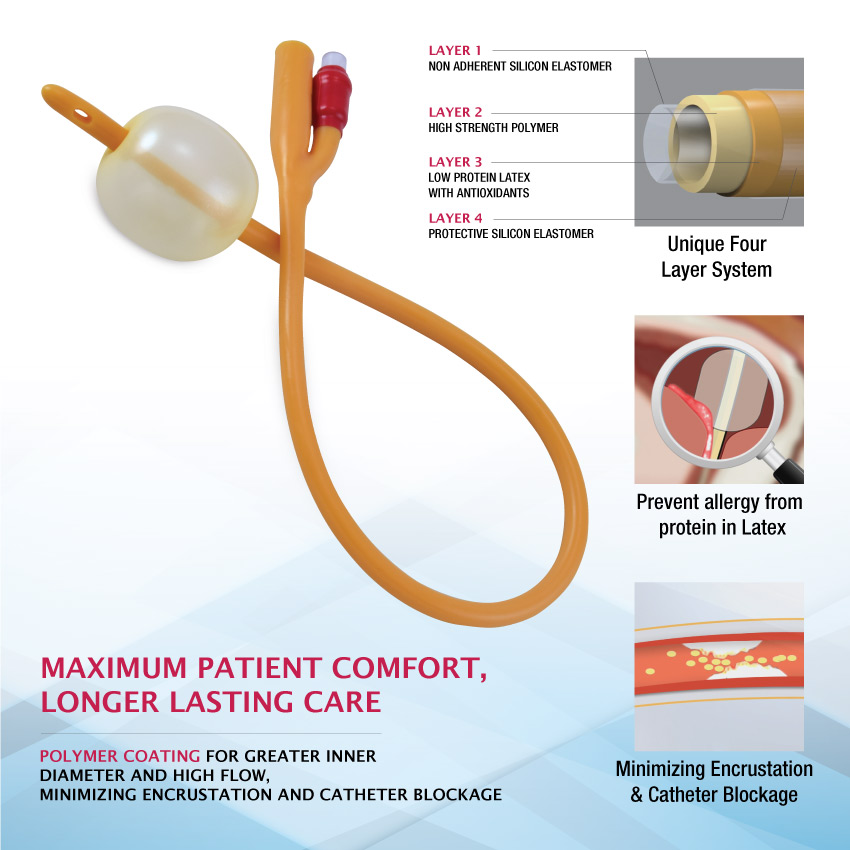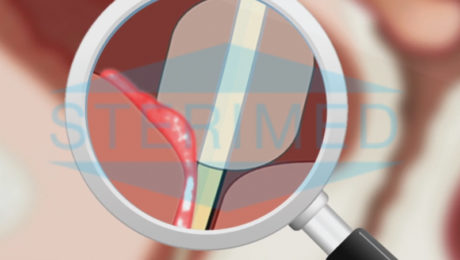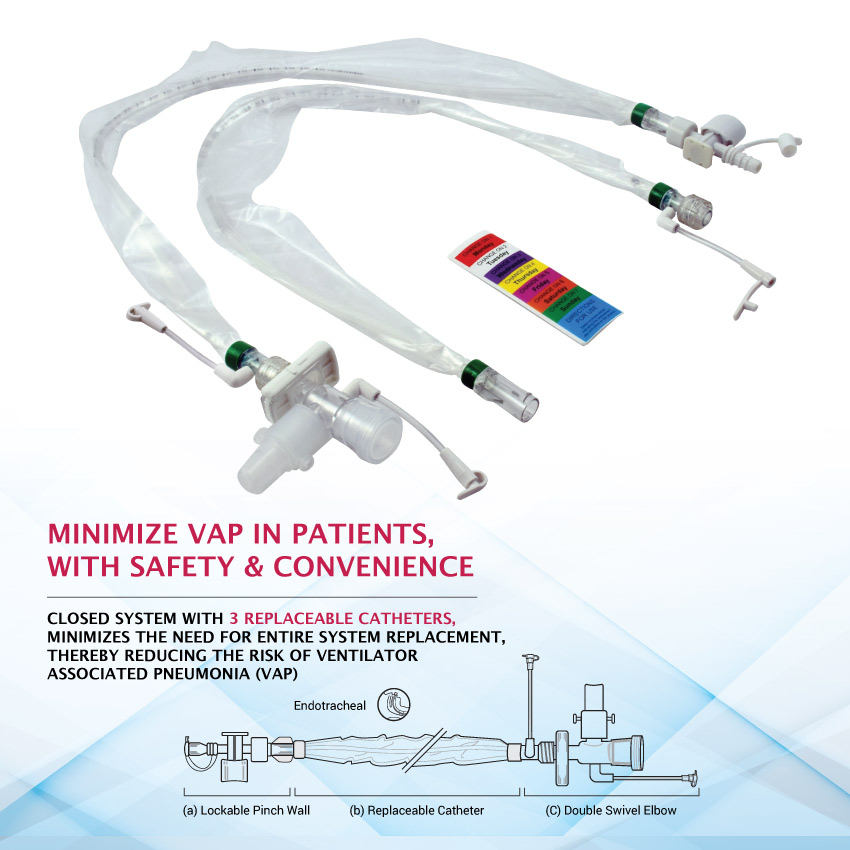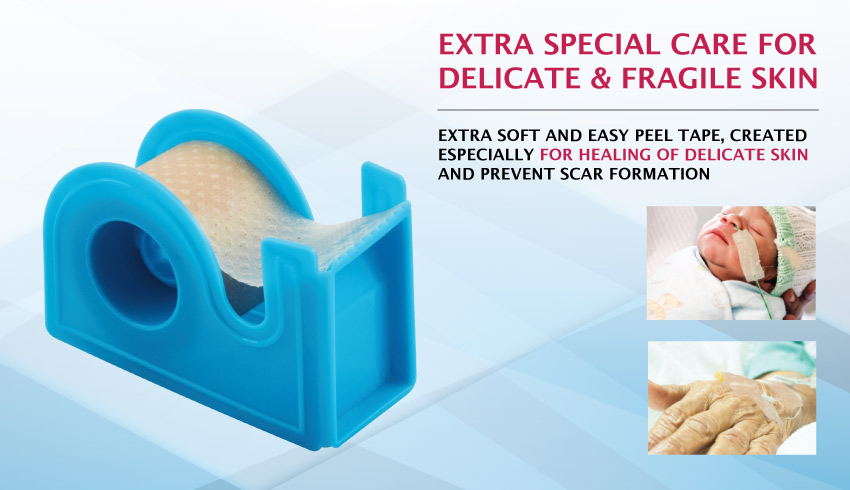
As healthcare professionals, it’s essential to ensure that medical procedures are performed safely and effectively to minimize patient risks and maximize positive outcomes. One procedure that requires particular attention is the placement and management of endotracheal tubes, which are commonly used for mechanical ventilation in critically ill patients.
Sterimed’s Reinforced Endotracheal Tube is a medical device made from non-toxic, non-irritant medical grade PVC, with a uniform spiral metal-reinforced tube wall that prevents kinking and supports proper tube position and verification during X-ray. It is E.T.O sterile and pyrogen-free for single patient use and features accurate and safe positioning ensured by graduation marks and a tip-to-tip radiopaque line, as well as a high volume / low-pressure cuff that ensures efficient low-pressure cuff seal (For cuffed tubes).
The proper placement and management of endotracheal tubes are critical to ensure that patients receive adequate ventilation, and complications such as pneumothorax, esophageal intubation, and hypoxemia are avoided. In this blog, we will discuss the importance of proper placement and management of endotracheal tubes and provide best practices for healthcare professionals, including the use of Sterimed’s Reinforced Endotracheal Tube.
Importance of Proper Placement of Endotracheal Tube
Proper placement of endotracheal tubes is essential to ensure that the tube is in the right location and that the patient receives adequate ventilation. Improper placement can lead to complications such as:
To ensure proper placement, healthcare professionals should follow best practices such as using

Monitoring the tube’s placement during ventilation
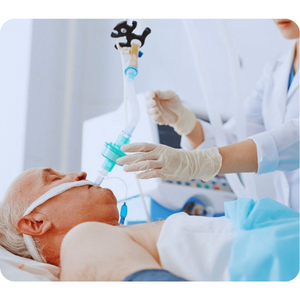
Assessing the patient’s response to ventilation
Sterimed’s Reinforced Endotracheal Tube is particularly useful in ensuring proper placement as it is designed to support tube position and verification during X-ray, and features graduation marks and a tip-to-tip radiopaque line for accurate and safe positioning.
Best Practices for Proper Management of Endotracheal Tube
Proper management of endotracheal tubes is equally important to ensure optimal patient outcomes. Healthcare professionals should monitor the tube’s position, assess cuff pressure to prevent air leaks and tracheal injury, and ensure that the tube is properly secured to prevent displacement. Frequent suctioning should be performed to prevent airway obstruction, and the patient’s level of sedation and analgesia should be monitored to avoid complications such as:
Sterimed’s Reinforced Endotracheal Tube is also useful in proper management as it features a high volume / low-pressure cuff that ensures efficient low-pressure cuff seal and prevents air leaks and tracheal injury.
Conclusion
In conclusion, proper placement and management of endotracheal tubes are essential procedures that require attention and best practices to ensure optimal patient outcomes. Healthcare professionals should follow guidelines such as using X-ray confirmation, monitoring the tube’s placement during ventilation, and assessing the patient’s response to ventilation. Proper management includes monitoring the tube’s position, cuff pressure, suctioning, securing the tube, and monitoring the patient’s level of sedation and analgesia. By incorporating the above best practices and using Sterimed’s Reinforced Endotracheal Tube, healthcare professionals can ensure optimal patient outcomes and avoid complications.
The Sterimed paper tape popularly known as Steripore and Steripore+, is an extremely popular, comfortable and flexible M. It is hypoallergenic, breathable and leaves minimal residue upon removal.
Here are some accounts from patients/users who found the Steripore and Steripore+ paper tape beneficial.
Preeti Malik, 37
I used the Sterimed paper tape last week and can’t be more satisfied with its results. I am hypersensitive to virtually all adhesives there are. But this tape is the only tape that doesn’t irritate my skin, or cause redness or pain on removal. This Paper Tape is breathable, flexible and is amazing for people like me with sensitive skin. It firmly adheres to the area without causing any problem. My doctor advised me to make sure that the area is clean and dry. After you’ve applied the tape it is essential to press and smoothen the back of the tape with warm hands, this will optimize its purpose of adhering to the surface. I liked how it doesn’t immediately come off when comes in contact of water. It is waterproof and protects my wound at the time of shower or while working with water. For me, it was a life saviour.
Annie Jose, 24
This tape didn’t fail me. I got a painful blister at my heel bone due to shoe bite. Few days passed and the condition worsened until I ordered this tape. Earlier, I couldn’t wear any shoes because of the pain caused by chafing. But this tape came to my rescue. It is light, breathable and adheres well even on joints. It differs from products of other brands since it is quite thin and works well without adding a lot of bulk under my socks. It didn’t only act as a barrier between my blister and the shoe but also promoted fast healing. It is advisable to apply the tape on clean and dry surface for better results. I would totally recommend this product.
Sterimed’s Endotracheal Tube is regarded as a reliable method for protecting a patient’s airway. It is used in general anaesthesia, intensive care and emergency medicine for airway management and mechanical ventilation.
Q1. What are the uses of Endotracheal tubes?
A1. Endotracheal tubes are used to maintain patent airway in long term mechanically ventilated patients. These tubes are excellent for oral or nasal intubation. It is also used as a route for administration of certain medicines like atropine, epinephrine and lidocaine.
Q2. What all features are present in Sterimed’s Endotracheal Tube?
A2. It has the following features:
- Universal 15 mm connector at proximal end.
- Kink resistant, thin walled, thermo sensitive tube, softens at body temperature.
- Radio opaque line and markings provided to facilitate identification of tube position.
- Smooth inside/outside surface for ease in intubation, extubation and suctioning.
Smooth polished murphy eye, distal end and tapered balloon end for atraumatic intubation.
Q3. How many types of Endotracheal tubes are available?
A3. Sterimed provides you with five different types of Endotracheal tubes:
- Endotracheal Tube Silicon
- Endotracheal Tube
- Endotracheal Tube- Subglottic Suction Line
- Endotracheal Tube Preformed
Reinforced Endotracheal Tube
Q4. Are there any contraindications for using Endotracheal tubes?
A4. There are some contraindications for using Endotracheal tubes that should be taken care of:
- They shouldn’t be used in procedures which involve use of laser or an electrosurgical active electrode in the immediate area of the device.
- They shouldn’t be used on patients suffering from severe throat inflammation or neck vertebra trauma.
Reinforced Endotracheal Tube shouldn’t be used during MRI scan.
Q5. Is it safe for the patients?
A5. Sterimed’s Endotracheal Tube is totally safe for the patients since it is made from non-toxic, non-irritant medical grade PVC.
Q6. How long should one wear the silicon tape to treat scars?
A6. Steripore Safe- microporous tape is absolutely reliable as it’s manufactured as per the British pharmacopeia (BP) guidelines.
Q7. Is it Sterilized?
A6. Sterimed’s Endotracheal Tube is E.T.O sterile and pyrogen free.
Q7. Can it be re-sterilized and used on multiple patients?
A7. No, Sterimed’s Endotracheal Tube cannot be re-sterilized and is meant for single patient use only.
Q8. How should Sterimed’s Endotracheal Tube should be stored?
A8. It should be stored inside containers or outer boxes under normal conditions in a clean and dry area. It shouldn’t be exposed to direct sun light or UV light.
Q9. What all variants and packings are available?
A9. Sterimed gives you up front choice of cuffed and plain Endotracheal Tubes. The sizes and packings of these variants are as follows:
 |
Gross: 6.5kg (400 pcs) Gross: 6.3kg (200 pcs) Gross: 8.6kg (200 pcs) |
 |
540 x 500 x 350mm (2.0 to 4.0mm) 660 x 320 x 380mm (4.5 to 6.0mm) 660 x 380 x 420mm (6.5 to 10.0mm) |
Both the variants are packed in either a box of 25 pieces or master carton of 200 and 400 pieces.
Steripore Safe is an extremely popular, hypoallergenic, microporous tape brought to you by your trusted partner and manufacturer of medical supplies, Sterimed. Microporous Tape has become a widely used product in dressing wounds and securing tubing by medical practitioners around the world. Here’s all you want to know about Steripore Safe, the microporous tape by Sterimed.
Q1. What makes Steripore Safe, the microporous tape by Sterimed unique?
A1. Steripore Safe, the microporous tape by Sterimed fights with the infection and helps recuperate the skin due to its unique anti-microbial properties. It is waterproof, breathable, adheres firmly to the skin and ensures minimal adhesive residue upon removal.
Q2. What are the uses of Steripore Safe microporous tape?
A2. The Steripore Safe microporous tape is used for securing osteomy pouches, securing catheters, fixing dressing on damp skin, securing lightweight tubing, and also for repeated taping on fragile skin.
Q3. Is Steripore Safe microporous tape safe for the skin?
A3. Steripore Safe microporous tape is one of its kind hypoallergenic, non-toxic, non- irritant microporous tape with uniform and gentle adhesive coating. Its silicon adhesive gel ensures soft peel with minimal residue after removal. It has special anti- microbial qualities for fast healing and enhanced infection control.
Q4. How is Steripore Safe different from other microporous tapes available in the market?
A4. Most microporous tapes are transported and stored under non-sterile conditions. This makes them carrier of infection and puts the patients on risk when used. Steripore Safe microporous tape addresses this problem of infection control with an effective solution. Steripore Safe is made from special microporous fabric coated with broad spectrum anti-microbial agent. This special anti-microbial covering minimizes the risk of tape itself being carrier of infection.
Q5. How to store Steripore Safe microporous tape?
A5. It is recommended to store Steripore Safe microporous tape under normal conditions at room temperature.
Q6. Is Steripore Safe microporous tape reliable?
A6. Steripore Safe- microporous tape is absolutely reliable as it’s manufactured as per the British pharmacopeia (BP) guidelines.
Q7. What size wound does Steripore Safe covers?
A7. Steripore Safe-microporous tape comes in varying thickness and can be used be used on wounds or applications of different sizes.
Q8. What all kind of sizes and packings are available in Steripore Safe microporous tape?
A8. Steripore Safe microporous is available in following sizes and packings:
| SIZES & PACKING |
| Size | Carton Size | Gross Weight |
| 1/2″,1″,2″x9.1mtr | 490x435x250mm | 15kg |
| 3″x9.1mtr | 440x345x360mm | 15kg |
| 1/2″,1″,2″x5mtr | 440x400x250mm | 9.7kg |
| 3″x5mtr | 430x330x360mm | 9.7kg |
Also, each carton contains 48 boxes.
Q9. How to apply and remove Steripore Safe microporous tape?
A9. Instructions to apply:
- Firstly, clean and dry the surface. The skin shouldn’t be moist.
- Secondly, apply the tape gently by placing and pressing down from the center and towards the edges.
- Finally, optimize adhesion by firmly pressing the tape on to the surface. This will ensure that the tape stays on its place.
Instructions to remove:
- Firstly loosen the tape from all the ends.
- Now, gradually remove the tape in the direction of hair growth.
- Brace the skin throughout the procedure.
Polymer Coating for greater inner diameter and High Flow, Minimizing Encrustation and Catheter blockage.
Foley Balloon Catheter – High Flow
1. Unique Four Layer System
- LAYER 1
Non Adherent Silicon Elastomer
- LAYER 2
High Strength Polymer - LAYER 3
Low Protein Latex With Antioxidants - LAYER 4
Protective Silicon Elastomer
2. Prevent allergy from protein in Latex
3. Minimizing Encrustation & Catheter Blockage
Foley Catheter Introduction
A Foley catheter is a thin, sterile tube inserted into the bladder to drain urine. Because it can be left in place in the bladder for a period of time, it is also called an indwelling catheter. It is held in place with a balloon at the end, which is filled with sterile water to prevent the catheter from being removed from the bladder. The urine drains through the catheter tube into a bag, which is emptied when full. The procedure to insert a catheter is called catheterization.
A Foley catheter is used with many disorders, procedures, or problems such as these:
- Retention of urine leading to urinary hesitancy, straining to urinate, decrease in size and force of the urinary stream, interruption of urinary stream, and sensation of incomplete emptying
- Obstruction of the urethra by an anatomical condition that makes it difficult for one to urinate: prostate hypertrophy, prostate cancer, or narrowing of the urethra
- Urine output monitoring in a critically ill or injured person
- Collection of a sterile urine specimen for diagnostic purposes
- Nerve-related bladder dysfunction, such as after spinal trauma (A catheter can be inserted regularly to assist with urination.)
- Imaging study of the lower urinary tract
- After surgery
Foley Catheter Risks
- The balloon can break while the catheter is being inserted. In this case, the doctor will remove all the balloon fragments.
- The balloon does not inflate after it is in place. Usually the doctor will check the balloon inflation before inserting the catheter into the urethra. If the balloon still does not inflate after its placement into the bladder, the doctor will then insert another Foley catheter.
- Urine stops flowing into the bag. The doctor will check for correct positioning of the catheter and bag or for obstruction of urine flow within the catheter tube.
- Urine flow is blocked. The doctor will have to change the bag or the Foley catheter or both.
- The urethra begins to bleed. The doctor will have to monitor the bleeding.
- The Foley catheter may introduce an infection into the bladder. The risk of infection in the urine increases with the number of days the catheter is in place.
- If the balloon is opened before the Foley catheter is completely inserted into the bladder, bleeding, damage and even rupture of the urethra can occur. In some individuals, long-term permanent scarring and strictures of the urethra could occur.
- Bladder spasms can occur when a catheter is placed. This is a sudden intense urge to urinate and can be painful. Often, urine will leak around the outside of the catheter when a spasm occurs. Medication can be prescribed for bladder spasms.
- 1
- 2
